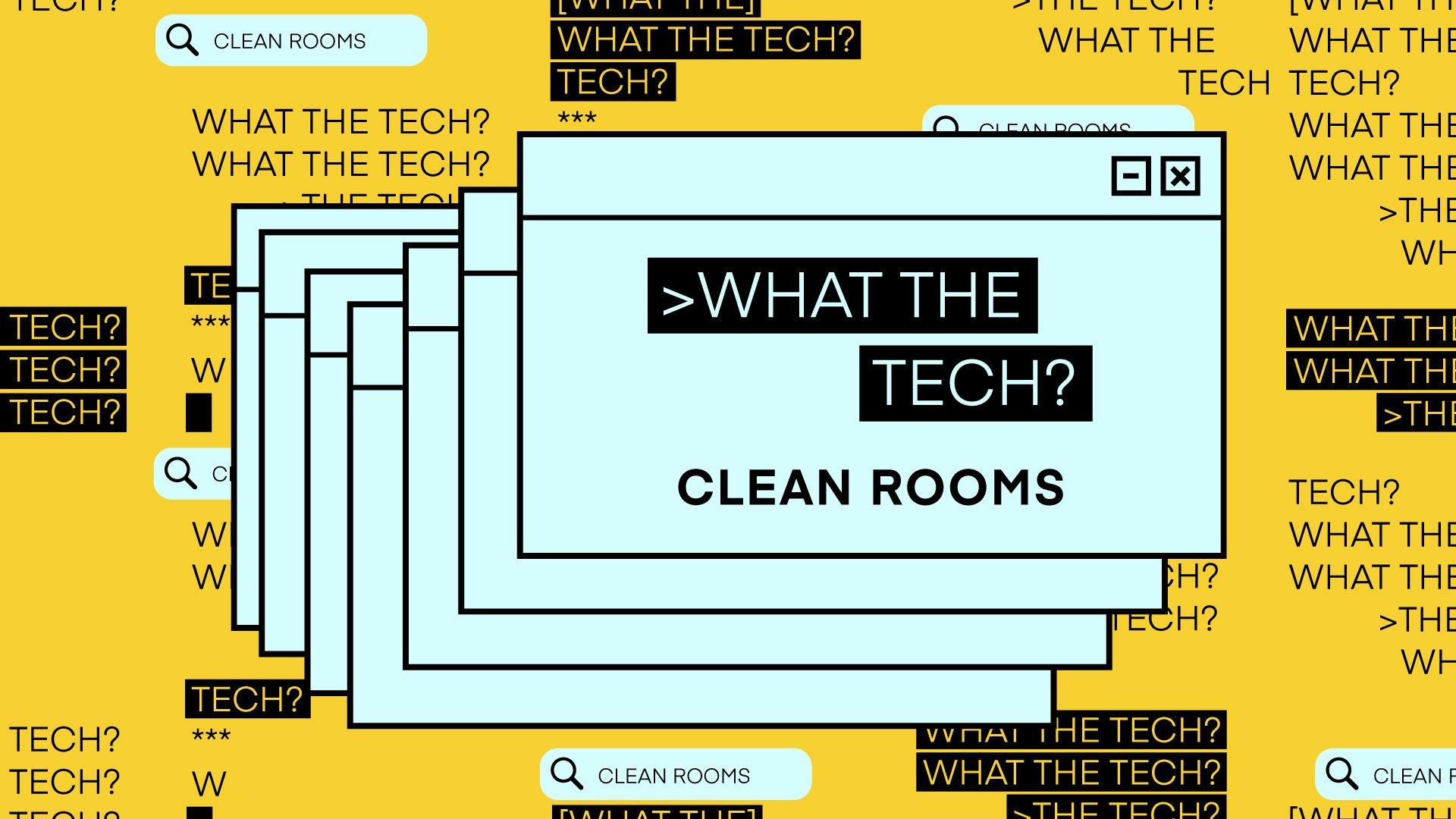What the Tech are clean rooms?

Illustration by Ollie Catton / The Current
Explaining what data clean rooms are and why they’re all the rage.
A clean room is more than just a sign of good personal habits — it’s also a new craze in digital marketing.
We explain what clean rooms are and why privacy regulations and third-party cookie deprecation have made them part of the marketing dialogue.
What is a data clean room?
A data clean room is a space where two separate entities — such as a brand and a buying platform (a demand-side platform (DSP), publisher, or retail media property) — can share first-party data in a privacy-conscious manner. By using data clean rooms, brands can work toward understanding their customer and conversion data relative to media they have purchased or are considering purchasing.
How do they work?
A buying platform (e.g., Facebook, Google, Amazon), publisher, or DSP will export data about the media exposure of its users to a data clean room. A brand will then export first-party data about its customers to the same clean room and compare the data sets. What both parties see is the aggregate data.
Large tech platforms like data clean rooms because they can share data about their users that third parties then receive in an aggregated, anonymized fashion. These platforms are often referred to as “walled gardens” because they’re so protective of their first-party data. Clean rooms allow them to share first-party data with their advertisers without risking the brand taking the data and using it elsewhere (a practice known as data leakage).
For brands, clean rooms allow them to identify users across different platforms and make sure they’re not inundating consumers with too many ads. For this reason, a data clean room is one way for brands to place frequency caps on their campaigns and measure incremental reach. These tactics can cut down on ad waste. And the brands don’t have to worry about data leakage either.
There are also third-party data clean rooms — vendors that act as a neutral site for any brands, publishers, and platforms that want to share their data.
Why are we suddenly talking about data clean rooms?
Data clean rooms have become popular over the past several years for two main reasons:
- Concerns about consumer privacy.
- Brands, publishers, and platforms making better use of their valuable first-party data.
What does this have to do with privacy?
There has been a major push in recent years to protect consumers’ personal information online. Many governments have enacted legislation limiting companies’ ability to collect and store data on consumers.
These developments have fostered a cottage industry aimed at increasing protections related to consumers’ privacy, while simultaneously allowing marketers to continue identifying and targeting consumers with personalized advertising. Clean rooms are part of this larger trend.
Each week, The Current gives you a rundown of the biggest stories and latest trends from the world of data-driven marketing, including topics like Connected TV and the future of identity — all delivered directly to your inbox.
Form not loading? Click here to get in touch.